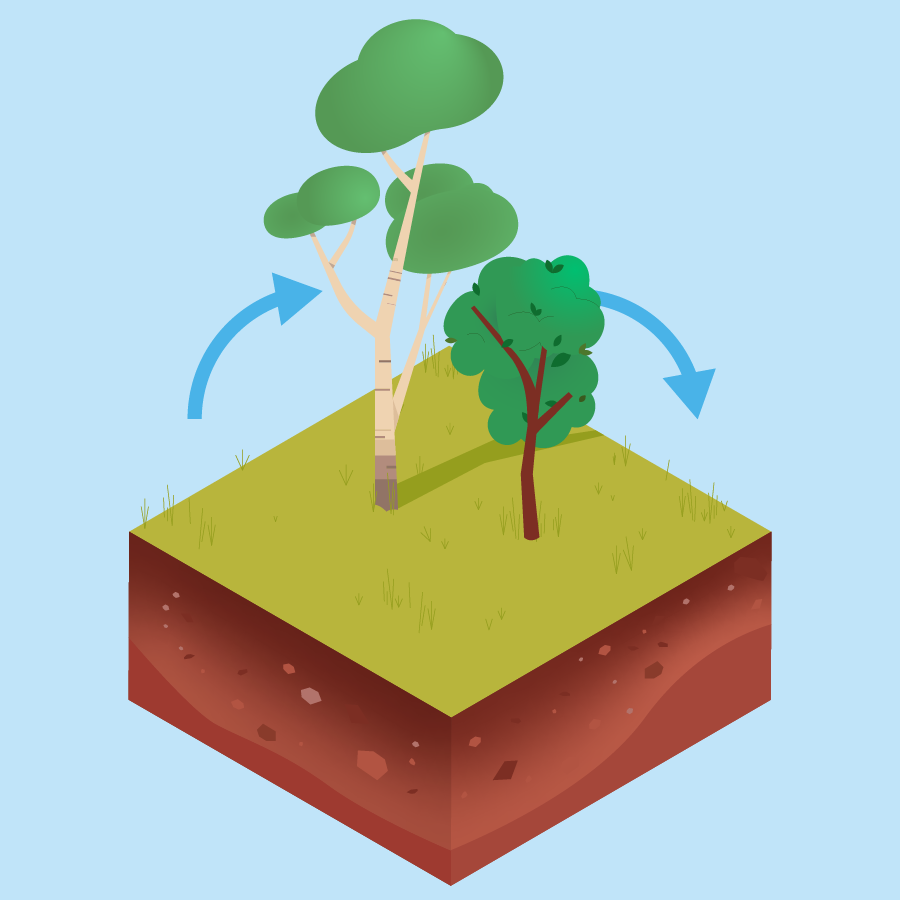
WIND
Wind, weather, evaporation and humidity are all
connected.
Wind speed and direction are key considerations in the design of any regenerative farm, affecting microclimates, contributing to evaporation and erosion.
Climate patterns dictate regional wind and weather direction and intensity. For example, cold, storm-carrying winds may come from the southwest in winter and hot, dry winds from the north in summer. Local landforms can have a major impact on these patterns at a farm level. Farmers decide on crop and livestock placement in each season depending on knowledge of these patterns.
Evaporation is the process by which a water molecule changes from liquid to vapour. Water vapour evaporates from water bodies and from land. Wind speed and relative humidity affect how rapidly evaporation occurs: the stronger the wind, and lower the relative humidity, the quicker surfaces dry out through evaporation.
Regenerative farmers aim to slow the wind to create protected microclimates, to lower evaporation rates, and to prevent erosion.
 Bufton Farming Group
Bufton Farming Group